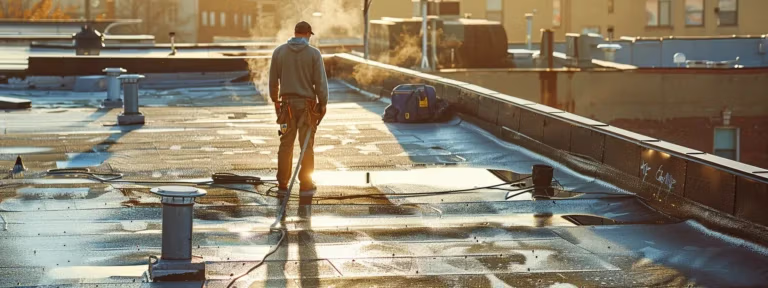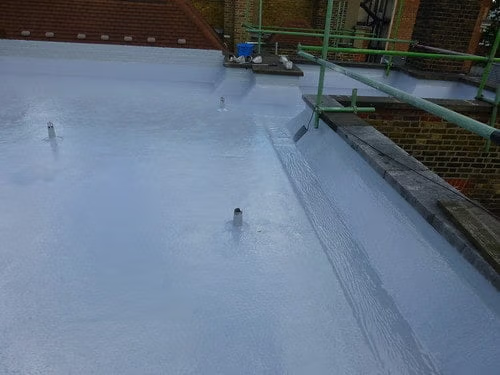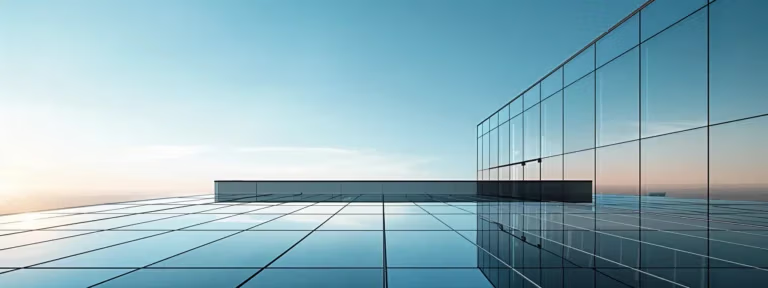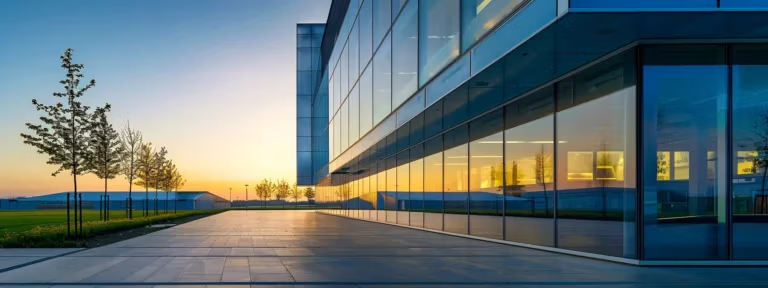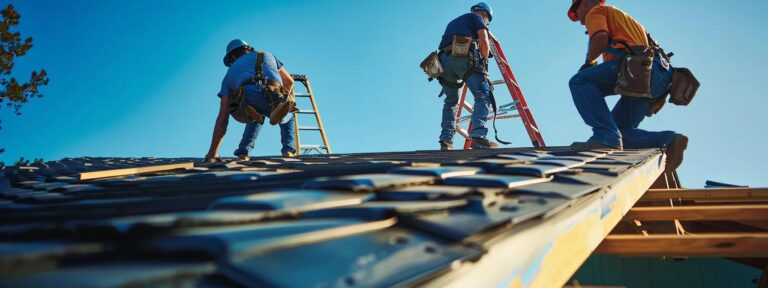Table Of Contents:
- How to Inspect Your EPDM Roof: A Comprehensive Guide
- Understand the Basics of Your EPDM Roof
- Prepare for the Inspection Process
- Conduct a Visual Inspection of Your EPDM Roof
- Assess the Condition of Roof Accessories
- Document Your Findings
- Plan for Regular Maintenance and Follow-Up
- Conclusion
Inspecting Your EPDM Roof for Optimal Building Maintenance To ensure the structural integrity of your property, conducting regular EPDM roof inspections is imperative. This detailed handbook covers the complete inspection process, spanning from fundamental aspects of EPDM roofing to meticulous record-keeping procedures. Adhering to these directives facilitates the timely identification of emerging issues, leading to cost and time savings on repairs. Whether you hold the role of a property owner or manager, this extensive guide furnishes you with the essential insights for preserving the prime condition of your EPDM roof.
Understand the Basics of Your EPDM Roof
As a roofing expert, I’ll guide you through the key aspects of EPDM roofing. We’ll explore the components of an EPDM system, common issues to watch for, and the expected lifespan of these roofs. Understanding these basics is crucial for effective roof maintenance and identifying potential problems like mold. Let’s dive into the essentials of EPDM roofing to help you maintain your roof’s integrity.
Identify the Components of an EPDM Roofing System
The epdm roofing system consists of several key components. The primary element is the EPDM membrane, a durable synthetic rubber material that forms the waterproof barrier. This membrane is typically black and comes in various thicknesses, providing protection against UV rays and weather damage.
Beneath the membrane, you’ll find insulation boards that provide thermal resistance and support. These boards are crucial for energy efficiency and help maintain the roof’s structural integrity. The insulation is often attached to the roof deck using fasteners or adhesives, creating a stable foundation for the EPDM membrane.
Other essential components include flashing materials used around roof penetrations and edges to prevent water infiltration. Adhesives and sealants are applied to secure the membrane and ensure watertight seams. Lastly, ballast or pavers may be used in some systems to protect the membrane from wind uplift and UV exposure.
Recognize Common EPDM Roof Issues
As an experienced roofing professional, I’ve encountered various issues with EPDM roofs during inspections. One common problem is membrane shrinkage, which can compromise the roof‘s waterproofing capabilities. This often occurs due to prolonged exposure to extreme climate conditions, causing the rubbermembrane to contract and pull away from the edges or penetrations.
Another issue I frequently observe is fastenerfailure. Over time, the fasteners securing the EPDM membrane can become loose or pop out, creating potential entry points for water. Regular inspections are crucial to identify and address these problems before they lead to more severe damage. Seam failures are also a common concern with EPDM roofs. The adhesives used to join membrane sections can deteriorate over time, especially in areas with high foot traffic or ponding water. During inspections, I pay close attention to these vulnerable areas to ensure the roof‘s integrity remains intact.
- Check for membrane shrinkage
- Inspect fasteners for looseness or failure
- Examine seams for potential failures
- Look for signs of ponding water
- Assess areas with high foot traffic
Understand the Lifespan of an EPDM Roof
EPDM rubberroofs are known for their longevity, typically lasting 20 to 30 years with proper maintenance. As a roofing expert, I’ve seen well-maintained EPDM membranes exceed these estimates, sometimes reaching up to 50 years of service. The lifespan largely depends on factors such as installation quality, climate conditions, and regular upkeep.
To maximize the lifespan of your EPDM roof, I recommend regular inspections, including scrolling the entire surface for signs of wear or damage. Pay special attention to seams and areas around roof penetrations, as these are often the first to show signs of deterioration. Proper attic ventilation also plays a crucial role in extending the life of your EPDM membrane by reducing moisture buildup.
The adhesive used during installation significantly impacts the roof‘s longevity. High-quality adhesives ensure better bonding between the EPDM membrane and the substrate, reducing the risk of premature failure. I always emphasize the importance of professional installation and using top-grade materials to my clients, as these initial investments can add years to the life of their EPDM rubber roof.
The basics of EPDM roofing are now clear. Let’s move on to preparing for the inspection process.
Prepare for the Inspection Process
Before inspecting your EPDM roof, proper preparation is crucial. I’ll guide you through gathering essential tools, including a ladder and sealant, choosing the optimal inspection time, and implementing safety measures. These steps ensure a thorough examination of your roof‘s deck and overall condition, helping maintain its warranty and identify any areas needing solvent-based repairs.
Gather Necessary Tools for Inspection
When inspecting an EPDM roof, I always start by gathering the essential tools. A sturdy ladder is crucial for safely accessing the roof, while a flashlight helps me spot potential leaks or damage, especially in low-light conditions. I also bring a moisture meter to detect hidden water infiltration that might not be visible to the naked eye.
For a thorough inspection, I include a probe or screwdriver to check for soft spots in the roofdeck, which could indicate waterdamage or rot. A camera or smartphone is invaluable for documenting any issues I find, allowing me to create a detailed report and track changes over time. Additionally, I carry a small broom to clear debris that might obscure potential problems on the EPDM surface.
Safety equipment is non-negotiable in my toolkit. I always wear non-slip shoes, use a safety harness when necessary, and bring cones or markers to cordon off areas below where I’m working. To address minor issues on the spot, I include a basic repair kit with EPDM-compatible sealant and patches. These tools enable me to conduct a comprehensive inspection and perform immediate repairs if needed:
- Ladder and safety harness
- Flashlight and moisture meter
- Probe or screwdriver
- Camera or smartphone
- Broom for debris removal
- Non-slip shoes
- Safety cones or markers
- EPDM repair kit (sealant and patches)
Choose the Right Time for Inspection
As a professional roofer, I always recommend choosing the right time for inspecting an EPDM rubber roof. Early morning or late afternoon are ideal, as these times offer better visibility and cooler temperatures. This allows me to thoroughly examine the synthetic rubbermembrane without the glare of midday sun or excessive heat that can mask potential issues.
I prefer conducting inspections after a period of dry weather to accurately assess the roof‘s condition. Recent rainfall can hide leaks or failures in the EPDM system, making it difficult to identify problem areas. However, I also schedule follow-up inspections during or immediately after rain to observe how the roof handles water and identify any active leaks.
Seasonal inspections are crucial for maintaining the integrity of your EPDM roof. I typically perform comprehensive checks in spring and fall, as these seasons often reveal damage from winter storms or summer heat. This proactive approach helps prevent minor issues from escalating into major failures, ensuring the longevity of your rubberroofsystem.
Ensure Safety Measures Are in Place
Before stepping onto your EPDM flat roof, I always conduct a thorough safety assessment. I check for nearby trees that could pose a hazard during the inspection and ensure the roof‘s structural integrity can support my weight. My inspection checklist includes verifying the stability of the ladder and securing it properly to prevent slips. I use personal protective equipment (PPE) to safeguard against potential hazards on the roof. This includes non-slip shoes to maintain traction on the EPDM surface, especially if moisture is present. I also wear a safety harness attached to a secure anchor point, which is crucial when working on a flat roof where fall risks may not be immediately apparent.
To ensure a comprehensive and safe inspection, I follow a systematic approach using my roofinspection checklist. This includes marking off hazardous areas, setting up safety cones below the work area, and having a communication device readily available in case of emergencies. By prioritizing safety, I can focus on detecting issues like moisture intrusion or membranedamage without compromising my well-being:
| Safety Measure | Purpose | Implementation |
|---|---|---|
| Tree assessment | Identify potential hazards | Visual inspection before accessing roof |
| Ladder security | Prevent falls | Proper placement and tie-off |
| PPE use | Personal protection | Wear non-slip shoes and safety harness |
| Area marking | Alert others to work zone | Set up safety cones and warning signs |
| Communication plan | Emergency response | Carry a charged mobile device |
The inspection loomed. We stepped onto the roof, ready to face the EPDM’s truth.
Conduct a Visual Inspection of Your EPDM Roof
As a flat roofing expert, I’ll guide you through a visual inspection of your EPDM rubber roof. We’ll document key areas, including blisters, cracks, and tears, while checking seam integrity and adhesion. I’ll also show you how to examine drainage points and flashings, taking into account the unique characteristics of EPDM roofing systems. This thorough inspection ensures your roof’s longevity and performance.
Inspect for Blisters, Cracks, and Tears
When inspecting an EPDM rubber roof, I always start by looking for blisters, which can form due to trapped moisture or air beneath the membrane. These raised areas can compromise the roof’s integrity and lead to leaks if left untreated. I carefully walk the roof surface, feeling for soft spots or uneven areas that might indicate blistering. Cracks and tears in the EPDM membrane are critical issues I check for during my inspection. These can occur due to age, extreme weather conditions, or physical damage. I pay special attention to areas around roof penetrations and flashing, as these are common spots for cracks to develop. Using a flashlight, I carefully examine the entire roof surface, including edges and corners.
During hot weather, I’m particularly vigilant about heat-related damage to the EPDM rubber. Excessive heat can cause the membrane to expand and contract, potentially leading to cracks or tears. I also check for any signs of foot traffic damage, especially in high-traffic areas or near HVAC units. After my visual inspection, I document my findings in a detailed PDF report, which helps track the roof’s condition over time.
Check Seam Integrity and Adhesion
When inspecting an EPDM roof, I always prioritize checking seam integrity and adhesion. I start by closely examining the seams where EPDM sheets meet, as these are potential weak points for water infiltration. Using a brush, I clear away any debris that might obscure my view, ensuring a thorough inspection of the seam areas.
I pay special attention to areas near air conditioning units and other roof penetrations, as these can stress the seams over time. I look for signs of separation or lifting at the seams, which could indicate adhesion failure. In some cases, I might need to apply a protective coat to reinforce vulnerable areas and prevent water ingress.
For a comprehensive check, I use a metal probe to gently test the seam adhesion without damaging the membrane. This allows me to identify any areas where the adhesive may have weakened, potentially requiring resealing. I document my findings meticulously, noting any issues for immediate repair or future monitoring:
| Inspection Area | Common Issues | Action Required |
|---|---|---|
| Seam Joints | Separation, Lifting | Resealing, Reinforcement |
| AC Unit Surroundings | Stress Cracks, Adhesion Failure | Protective Coating, Repair |
| Roof Penetrations | Water Infiltration, Weak Adhesion | Sealing, Flashing Repair |
Examine Drainage Points and Flashings
When inspecting EPDM roofs, I always pay close attention to drainage points and flashings. These areas are critical for maintaining the roof‘s waterproofing integrity. I start by examining all drains, scuppers, and gutters, ensuring they’re free from debris and allowing water to flow freely.
I carefully inspect the flashing around chimneys, vents, and other roof penetrations on EPDM roofs. I look for signs of separation, cracking, or deterioration in the flashing material. These issues can lead to water infiltration if left unaddressed, potentially causing significant damage to the roof structure.
During my inspection of EPDM roofs, I also check the condition of the membrane around drainage points. I look for any signs of ponding water, which can indicate improper slope or blocked drains. Addressing these issues promptly helps prevent premature aging of the EPDM membrane and reduces the risk of leaks.
The visual inspection complete, we move on. Roof accessories demand our attention next.
Assess the Condition of Roof Accessories
As a roofing expert, I’ll guide you through assessing key roof accessories on your EPDM system. We’ll examine roof edges and curbs, inspect vents and penetrations for damage, and evaluate protective coatings. These elements are crucial for maintaining your roof‘s integrity and preventing water infiltration. Let’s dive into each area to ensure your EPDM roof remains in top condition.
Review the Condition of Roof Edges and Curbs
When inspecting an EPDM roof, I always start by examining the roof edges and curbs. These areas are critical points where the membrane terminates and interfaces with other building components. I look for signs of membrane separation, which can allow water to penetrate beneath the roofingsystem.
Curbs around rooftop equipment require special attention during my inspections. I check for proper flashing height and secure attachment of the EPDM membrane to the curb. Any gaps or loose areas can lead to leaks, so I ensure these are addressed promptly to maintain the roof‘s integrity.
At the roof edges, I inspect the termination bar or metal coping for secure fastening and proper sealant application. I also check for any signs of winddamage or lift, which could compromise the roof‘s performance. Addressing issues in these areas quickly helps prevent more extensive damage to the EPDM roofing system.
Inspect Vents and Penetrations for Damage
When inspecting vents and penetrations on an EPDM roof, I focus on potential weak points where water infiltration can occur. I carefully examine the flashing around each penetration, looking for signs of separation, cracking, or deterioration. These issues can compromise the roof‘s waterproofing and lead to leaks if left unaddressed.
I pay close attention to the condition of pipe boots and other prefabricated flashing components. Over time, these can degrade due to UV exposure and weathering, potentially allowing water to seep into the building. I check for proper sealing and adherence to the EPDM membrane, ensuring there are no gaps or loose areas that could compromise the roof‘s integrity.
During my inspection, I also assess the overall condition of roof vents and their surrounding areas. I look for signs of rust, corrosion, or physical damage that could affect their performance. Proper ventilation is crucial for maintaining a healthy roofsystem, so I ensure all vents are functioning correctly and aren’t obstructed. Here’s a checklist I follow when inspecting vents and penetrations:
- Examine flashing for separation or damage
- Check pipe boots for degradation
- Assess sealing and adherence to EPDM membrane
- Inspect roof vents for rust or corrosion
- Ensure all vents are unobstructed and functioning
- Look for signs of water infiltration around penetrations
Evaluate the Condition of Roof Coatings
When evaluating roof coatings on EPDM systems, I start by visually inspecting the entire surface. I look for signs of wear, such as cracking, peeling, or discoloration, which can indicate areas where the coating’s protective properties have diminished. These issues often appear first in high-traffic areas or spots exposed to prolonged sunlight.
I pay special attention to the coating’s thickness and consistency across the roof. Uneven application or thinning areas can lead to premature failure of the coating, exposing the EPDM membrane to potential damage. Using a simple thickness gauge, I measure multiple points to ensure adequate coverage throughout the roof surface.
Lastly, I assess the coating’s adhesion to the EPDM membrane. Poor adhesion can result in blistering or delamination, compromising the roof’s waterproofing capabilities. I perform adhesion tests in various locations, particularly at the roof’s edges and around penetrations, where coating failure is most likely to occur. This thorough evaluation helps me determine if recoating or repairs are necessary to maintain the roof’s protective barrier.
The inspection was thorough. We documented every detail.
Document Your Findings
As I conclude my EPDM roof inspection, I focus on documenting my findings thoroughly. I take detailed notes and photos to capture all issues accurately. These records form the basis of a comprehensive inspection report, which serves as a valuable reference for future maintenance. I also identify any urgent repairs needed, ensuring immediate action can be taken to protect the roof’s integrity.
Take Detailed Notes and Photos
When inspecting an EPDM roof, I always carry a digital camera or smartphone to capture high-resolution images of any issues I encounter. These photos serve as visual documentation, complementing my written notes and providing clear evidence of the roof‘s condition. I make sure to take wide-angle shots of the entire roof area, as well as close-ups of specific problem spots.
I use a standardized note-taking system to ensure consistency across all my EPDM roof inspections. My notes include the date, time, weather conditions, and specific locations of any damage or potential issues. I pay particular attention to areas around roof penetrations, seams, and drainage points, as these are common trouble spots for EPDM roofs.
To organize my findings effectively, I create a detailed inspection checklist tailored to EPDM roofing systems. This checklist helps me systematically assess each component of the roof, ensuring nothing is overlooked. I record measurements, observations, and recommendations for repairs or maintenance directly on this checklist, which becomes an integral part of my final report:
| Inspection Area | Observations | Action Required |
|---|---|---|
| Membrane Surface | Condition, blisters, tears | Repair or replace as needed |
| Seams | Adhesion, separation | Reseal or reinforce |
| Flashings | Integrity, water tightness | Repair or replace |
| Drainage | Blockages, ponding water | Clean or improve slope |
Create an Inspection Report for Future Reference
After completing my EPDM roofinspection, I compile a comprehensive report detailing my findings. This report serves as a valuable reference for future maintenance and repairs. I include a summary of the roof‘s overall condition, highlighting any areas of concern and prioritizing necessary actions.
In my report, I organize the information systematically, categorizing issues by severity and location. I incorporate the photos and measurements taken during the inspection, providing visual context for each identified problem. This visual documentation proves invaluable when discussing repairs with contractors or tracking the roof‘s condition over time.
I always conclude my EPDM roofinspection report with specific recommendations for maintenance and repairs. These recommendations are based on my professional assessment and industry best practices. By providing clear, actionable advice, I ensure that property owners can make informed decisions about their roof‘s care, potentially extending its lifespan and preventing costly damage.
Identify Urgent Repairs Needed
During my EPDM roofinspection, I prioritize identifying urgent repairs that require immediate attention. I look for severe membranedamage, such as large tears or punctures, which can lead to significant water infiltration if left unaddressed. These issues often necessitate prompt patching or section replacement to maintain the roof‘s integrity.
I also focus on detecting critical failures in the roof‘s waterproofingsystem. This includes severe seam separations or extensive areas of delamination, which compromise the EPDM membrane‘s ability to protect against moisture. I mark these locations clearly in my report, emphasizing the need for swift professional intervention to prevent further damage.
Another urgent issue I watch for is blocked or damaged drainage systems. Improperly functioning drains can lead to ponding water, which not only adds excessive weight to the roof structure but also accelerates the deterioration of the EPDM membrane. I recommend immediate clearing of clogged drains and repair of any damaged drainage components to ensure proper water evacuation from the roof surface.
The inspection revealed truths. Now, we prepare for the future.
Plan for Regular Maintenance and Follow-Up
As a roofing expert, I emphasize the importance of proactive maintenance for EPDM roofs. I’ll guide you through scheduling routine inspections, developing a long-term maintenance plan, and considering professional assessment options. These strategies help extend your roof‘s lifespan, prevent costly repairs, and ensure optimal performance. Let’s explore how to keep your EPDM roof in top condition year-round.
Schedule Routine Inspections
As a roofing professional, I recommend scheduling routine inspections for your EPDM roof at least twice a year. I typically suggest conducting these checks in spring and fall, as these seasons often reveal damage from winter storms or summer heat. Regular inspections help identify potential issues early, preventing minor problems from escalating into costly repairs.
During these scheduled inspections, I focus on key areas of the EPDM roofsystem. I examine the membrane for signs of wear, check seams for integrity, and assess drainage systems for proper function. This systematic approach ensures a thorough evaluation of your roof‘s condition, allowing me to spot any developing issues before they become serious problems.
To maintain consistency in your EPDM roof inspections, I recommend creating a standardized checklist. This tool helps track the roof‘s condition over time and ensures no critical areas are overlooked. Here’s an example of a basic inspection schedule I often use with my clients:
| Inspection Type | Frequency | Key Focus Areas |
|---|---|---|
| Visual Check | Monthly | Debris removal, visible damage |
| Detailed Inspection | Bi-annually | Membrane condition, seams, drainage |
| Professional Assessment | Annually | Comprehensive evaluation, specialized tests |
Develop a Long-Term Maintenance Plan
When developing a long-term maintenance plan for EPDM roofs, I focus on creating a comprehensive schedule that covers all aspects of roof care. This includes regular cleaning, inspections, and preventative maintenance tasks. I tailor the plan to the specific needs of each roof, considering factors like climate, building use, and roof age.
I always emphasize the importance of proactive maintenance in my long-term plans. This approach helps identify and address potential issues before they escalate into major problems. I include tasks such as clearing debris, checking drainage systems, and inspecting seams and flashings at regular intervals throughout the year.
To ensure the effectiveness of the maintenance plan, I recommend documenting all activities and findings. This creates a valuable history of the roof‘s condition and helps track its performance over time. Here’s an example of a basic long-term maintenance schedule I often use for EPDM roofs:
| Maintenance Task | Frequency | Responsible Party |
|---|---|---|
| General cleaning | Quarterly | Facility staff |
| Detailed inspection | Bi-annually | Roofing professional |
| Seam check and repair | Annually | Roofing professional |
| Drainage system cleaning | Bi-annually | Facility staff |
Consider Professional Assessment Options
As a roofing expert, I strongly recommend considering professional assessment options for your EPDM roof. While regular self-inspections are valuable, a trained professional can spot subtle issues that might escape an untrained eye. I typically suggest scheduling a comprehensive professional assessment at least once a year to ensure your roof‘s longevity and performance.
When selecting a professional for your EPDM roof assessment, I advise looking for certified inspectors with specific experience in rubberroofing systems. These experts often use advanced tools like infrared scanners to detect hidden moisture or thermal imaging to identify energy loss. In my experience, this level of detailed analysis can uncover potential problems before they lead to significant damage or costly repairs.
Professional assessments also provide you with detailed reports and recommendations for maintenance or repairs. I find these reports invaluable for planning future budgets and prioritizing roofing projects. They often include high-quality documentation and specific repair strategies, which can be crucial when dealing with insurance claims or warranty issues related to your EPDM roof.
Conclusion
Regular inspection of your EPDM roof is crucial for maintaining its integrity and prolonging its lifespan. By understanding the basics, preparing properly, conducting thorough visual inspections, and assessing roof accessories, you can identify potential issues before they become major problems. Documenting your findings and creating a comprehensive maintenance plan ensures consistent care and timely repairs. Ultimately, investing time in proper EPDM roofinspection and maintenance can save you significant costs in the long run and protect your building from waterdamage and other roofing-related issues.

